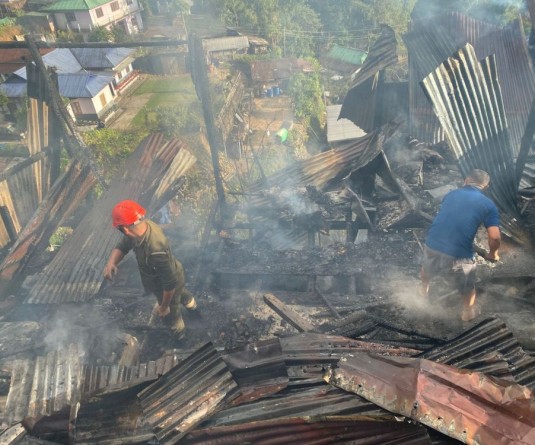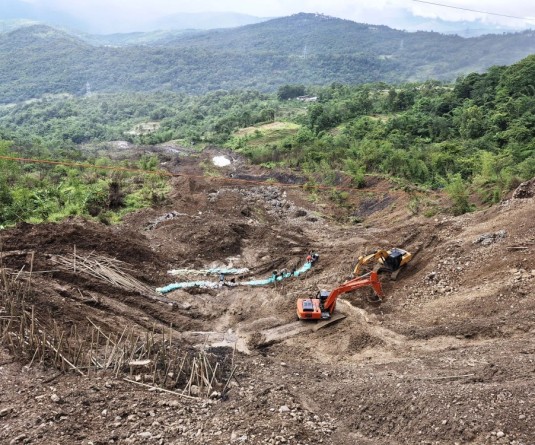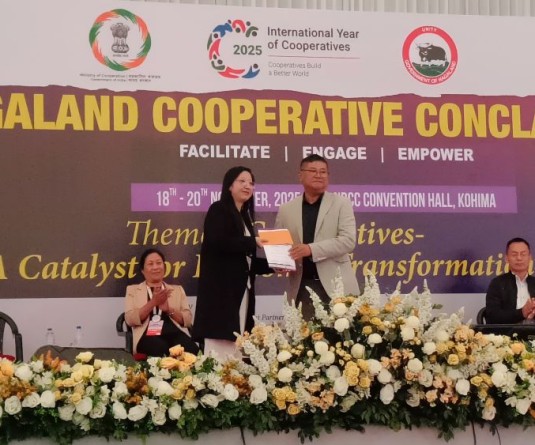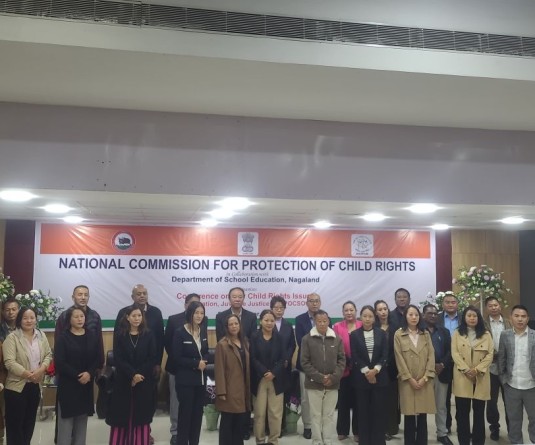
Heritage Museum at Zapami Village inaugurated
Morung Express News
Zapami | June 1
Zapami Village, one of the Chakhesang Naga villages under Pfutsero Sub-division of Phek District has always been branded for the unique historical experiences and rich cultural heritage that the village and its people embody.
Situated in the midst of lush green terrace fields located about 50 kilometers away from Kohima, Zapami village has produced rich socio-cultural capital and may even be referred to “as a cultural repository.”
In an effort to preserve and keeping alive the stories of the historical experiences, Zapami Heritage Museum along with the village council conference hall was inaugurated by Razouvolie Dozo, Project Director, District Rural Development Agency, Phek on May 26.
“A visit to the collection of antiques will take you to the way of life in the village during the olden times.
Unfortunately, the lack of awareness for these resources had taken a huge toll. Looking at the collection, most of the items had been through time and environmental factors. Therefore, the construction of the museum may be considered timely,” states Riku Khutso, PhD History, University of Hyderabad.
Another reason for the construction of the museum has been to encourage academic research on the village, its history, people and culture.
“Serious research engagements could help reconstruct our past, culture and perhaps reveal more about the Nagas and its history. Moreover through the effort of preservation of village heritage, the village wants to connect with its descendants and groups whose migration routes and history had been immersed in time and circumstances,” Riku said.
Besides other reasons, the Heritage Museum has been constructed for the purpose of documentation, preservation, exhibition and resuscitation of ancestral relations.
The museum has over 250 items to its galleries. The antiques range from very ancient to more recent times like that of the World War II remains. Some of the items include an ancient grave, fetish stones, weapons of ancient warfare including an Elephant skin shield, instruments of war and friendship treaties, cotton and stinging nettle processing technologies, loin loom tools, baskets of different sizes and utilities, granaries, ancient grain pounding tables and systems, wooden rice beer vats, potteries of different make and sizes, hunting trophies, ancient systems of weights and measures, ancient blacksmithy tools, ancient musical instruments, traditional kitchen, collection of World War II remains and much more. The war remains mostly belong to the Japanese forces. There are gas masks, a mortar shell, rifles, water bottles, etc.
Earlier, the village had a huge collection of Japanese rifles, ammunition and other war residues but it got either confiscated or deposited during the Indian military operations. The village deeply regrets the huge cultural resources that had been exhausted when the Indian Armed forces had razed the entire village in the mid-1950s.
This project is a small attempt of piecing together some of the archaic collections to reconstruct and showcase the way of life of the past Naga village societies. It is open to public on all days against a small charge of Rs 20 p/h for private visitors, Rs 50 p/h for government officials and Rs 20 for use of camera. In addition, a book on the Heritage of Zapami Village along with a brochure is available for Rs 500 only. Interested persons may contact these numbers - 94360 01640, 89743 23142 and 94360 01420.
Meanwhile, the village council has acknowledged the chief guest for being very instrumental in the completion of the project and the leaders of all the seven Kuzhathede villages, government officers, public leaders and well-wishers for their contribution.






